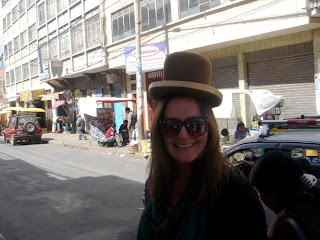The story of the discovery and excavation of the tomb is a popular one around these parts. There is the version that exists in the “official” history of the region, and there are the versions that are passed from family to family. As you can imagine, the official history lacks some of the local color and flair I’ve come to expect from my Peruvian neighbors. I’ve been here long enough to listen with a heavy dose of skepticism, but after nearly two years piecing together the disparate bits, doing a little of my own research, and brushing up on archaeological vocabulary, I’m ready to take the story public.
Get ready – it’s a fascinating yarn of mystery, the supernatural, history, and international intrigue. And also one that’s surprisingly heartbreaking.
Seriously.
The Moches were dominant from around 100 AD to 800 AD, an impressive reign by all accounts. The surviving pyramids (the huacas for which my town is named) don’t look like much; they’re large, misshapen dirt mounds. Before the archaeologists descended, local residents didn’t know, or didn’t care, that they were valuable relics from the past. In the time of Spanish colonization, homesteads were built directly on the huacas. Weather, time and human destruction have taken their toll.

Beginning in the early 1980s, local residents began finding little gold statues or ceramics in the fields around the huacas. My host mom loves to tell a story of her kids bringing home huge hunks of turquoise they found in the mud after a particularly hard rainstorm. Every local family has stories of treasures found and lost again.
In the mid-1980s the Bernales family claims to have received a divine message directing them to the source of all these riches. Mr. Bernales, who coincidentally is a distant cousin of Papy’s family, told his friends and family that he’d dreamt of four donkeys pulling carts of gold from the mounds. He is said to have pressured Papy’s father to go on a late-night raid with him. Papy’s papy declined and the secret raid went ahead without him. The Bernales family racked up some serious loot, and they weren’t shy about telling people: supposedly their windowsills were decorated with gold statues. A local bigwig got wind of the fortune and alerted the authorities. According to my host family, a few months later, police stormed the Bernales residence, severely beat Mr. Bernales, and sacked all the loot. Mr. Bernales died in the car on the way to Chiclayo.
Shortly thereafter, in the spring of 1987, archaeologist Walter Alva discovered the warrior tomb, directly below where Bernales and friends first hit it big. The artifacts were hauled down in donkey-pulled carts. To this day, long-time residents of Huaca Rajada and Sipán scoff at Alva’s name, not believing he deserves the credit and fame for the discovery that cost one of their own his life.

It’s unfortunate to lose such valuable relics, and with them a window into the past. But what is perhaps more tragic is the daily reminder to the people of Sipán and Huaca Rajada of the narrow window of their future.
In the wake of the 1987 discovery Sipán landed on the international archaeology scene. And with the subsequent discoveries and the construction of the new site museum, there was a hope that the community could at long last capitalize on its rich history.
Unfortunately, the increasing numbers of tourists and high-profile visitors do little to change the economic realities in these towns. The museum employs very few local workers, choosing instead to bus in “experts” from Chiclayo, Trujillo or Lima. The excavation site is only open for part of the year, and the additional workers hired earn a pittance for their manual labor. None of the proceeds from the ticket sales are invested back into the town.
This certainly does not mean that there aren’t opportunities for improving relationships between the museum and the community. There are. I’ve been trying to facilitate those meetings for two years. But the river of mistrust runs deep around here. Damn the man!
Editor’s Note: I am not an expert on this issue, and it’s more complicated than one blog entry can tackle, but I do feel confident in expressing my opinion as someone who has lived here, among the people, every day for the past 22 months.

















